Thailand's first protected area at the gateway to the northeast
Tusker on the road in Khao Yai
Khao Yai is Thailand’s longest established national park. Set up in 1962, it is located in the southwest corner of the Khorat Plateau at the western end of the Phanom Dongrak mountain range. One of the Kingdom's most popular national parks, it encompasses 2,168 square kilometers, with both moist and dry evergreen plus deciduous forest covering about 80 percent of the park.
Green Map showing Khao Yai, Thap Lan and Pang Sida
Khao Yai (meaning ‘big mountain’ in Thai) is part of the Dong Phaya Yen – Khao Yai forest complex covering 6,152 square kilometers and is Thailand’s second ‘World Heritage Site’ granted on July 14th 2005 by Unesco. The complex comprising of five protected areas including Khao Yai are Thap Lan (1981 - 2,235 sq. kms), Pang Sida (1982 – 844 sq. kms.) and Ta Phraya (1996 – 594 sq. kms.) national parks, and Dong Yai Wildlife Sanctuary (1996 – 312 sq. kms.).
Male muntjac (barking deer) in the grassland
A single paved road runs completely through Khao Yai from Nakhon Nayok province to Pak Chong, Nakhon Ratchasima province. The increased traffic has greatly disturbed wildlife. The park is, however, a popular destination for those people who want convenient access from Bangkok to nature at its best. Thai and foreign tourists visit in great numbers throughout the year. In the East is Highway Route 304 that cut the contiguous forest of Khao Yai and Thap Lan national parks in half, and this alone has dissected elephant and gaur migration patterns between the two protected areas, and most certainly causing a problem with genetics in the wild herds. With less area to roam, inbreeding becomes a serious problem.
Haew Narok waterfall
Several side roads within the park lead to various attractions such as the Haew Narok and Haew Suwat waterfalls, and several mineral licks with wildlife lookout towers. Khao Yai is one of the best places to see elephant, sambar, barking deer, monkey and gibbon in the wild. In the past, a tiger was seen here but not for some time now. There are four species of hornbill that can be observed from time to time. Over 300 species of bird have been recorded including Siamese fireback and silver pheasant. There are 71 species of mammal recorded here including gaur, clouded leopard, Asian wild dog, Asiatic black bear, Malayan sun bear, wild pig, civet and mouse deer. Smaller species such as squirrel and bat predominate.
Banded kingfisher near the campground
Guided tours are available in the park, covering approximately 50 kilometers of marked trails that splay out in all directions from the headquarters area. However, during the rainy season, leeches are a problem but tour operators’ offer protective clothing and ointments to ward off the biting invertebrate.
Pig-tailed macaque monkey by the road
In the old days some 60 years ago, settlers within the park hunted and practiced slash and burn agriculture. This left many open areas, which are now grassland. The settlers were eventually evicted after the park was created but there are still many problems with encroachment and poaching from the outside.
Great hornbill on a nest near the road
In the 1970s, the Tourism Authority of Thailand (TAT) established a golf course and resort in the grassland area. It was quite easy to see wildlife from the links. I actually played golf several times on the course back in the mid-1970s (lost quite a few golf balls) and it was the Royal Forest Department (RFD) that closed this down and have since allowed development only in the headquarters area. Nonetheless, many influential developers have encroached on the lower-lying boundaries of the park to build resorts and golf courses. This has had an adverse effect on the local environment and its wildlife. Many people still live within the boundaries of Khao Yai but it would be extremely difficult to relocate them or move them out.
Sambar stag at the campground
Most recently, real estate developers have tried to ring the park with a new road along which would allow new properties to be built. Lately, expansion of the road to Khao Yai is just one of the many threats facing this World Heritage Site. Constant vigilance is needed for this place and even then, political pressure is destroying it as fast as they can.
Haew Suwat waterfall
Over the years, several rangers and an NGO worker were killed in a remote area that was known for poaching and encroachment. These men were cut down in a hail of bullets, thus joining the ranks of the many who have perished while trying to save the Kingdom’s forests.
Tusker on the road in Khao Yai
Tusker at a mineral deposit in Khao Yai
Tusker on the move
Khao Yai, as Thailand's first gazetted national park, should be the role model for all conservation areas. Given this important heritage, increased efforts by those responsible needs to be made to better manage and save the park from continued misuse, overdevelopment, poaching and encroachment. The growing number of visitors and vehicles that pass through Khao Yai poses the greatest threat to the wildlife, which, instead of flourishing, may disappear, little by little. If this were to occur, it would be a sad outcome for the Kingdom’s magnificent natural treasure and one of the most famous protected conservation areas in Asia.
Young tusker by the road
Notes from the field:
On my last trip to Khao Yai two weeks ago as I was leaving the park in my Ford 4X4 going towards Nakhon Nayok, I passed several vehicles with the occupants flashing their lights and waving their arms. I assumed elephants were on the road. Down I went and as sure as the day is long, bumped into an enormous tusker shown below and at the beginning of this thread. He was tall and his tusks were slender but quite long. As I approached, he started walking in my direction. I stood my ground for a short while but as he got to about 20 meters, I began reversing my truck. Luckily, no one was behind me. He then turned and began chasing the van shown in the picture. I again closed the distance and this time he wheeled around, trumpeted and went into second gear as he charged. Reverse was the only option and the old boy finally became tired of us humans making life unpleasant for him. I waited and he finally moved into the bush.
Big tusker on the road
There is footage on ‘YouTube’ of charging elephants in Khao Yai and all I can say, it can be unpleasant when these Asian giants become irritated at vehicles that get too close. My main worry is that some day, one of these old cantankerous bulls is going to catch-up to someone and the consequences could be disastrous. More needs to be done to educate the people entering the park especially from the Nakhon Nayok side about this problem and the danger associated with these elephants. Large signboards with warnings need to be posted informing the visitors of the potential danger.
Young tusker on the road
Over the years, I have bumped into quite a few elephants on the road and it is always 'touch and go'. Need-less to say, when visiting Khao Yai, stay in your car and keep your distance where elephants congregate on the road.
Pig-tailed macaque showing long canines
Another problem area is the pig-tailed macaque monkey usually found on the road going up into the park from either side. They have become habituated to humans as tourists have been feeding them for a long time and these smart creatures have sometimes become bold. There has been a few instances where people thinking they are doing merit, get bit on the hand which could lead to a serious infection or even maybe a severed finger. They have long canines. The public must realize that feeding them is dangerous and needs to stop. But like all things here in Thailand, is easily forgotten.
Close encounter: Tusker and tourists
Male muntjac jumping a motorcycle
Muntjac on the move
Muntjac into the forest
Over the long run, too many people and cars will overcome this place unless the Department of National Parks changes its policy. Limited visitation is the only answer but that will never come to pass. Hopefully one day, the powers to be will take action to remedy the many problems facing Khao Yai, and the other parks in this designated World Heritage Site.
Results 51 to 57 of 57
Thread: Khao Yai National Park
Threaded View
-
12-06-2010, 01:47 PM #1Member











- Join Date
- Jun 2010
- Last Online
- 16-03-2013 @ 03:07 PM
- Location
- The forests of Thailand
- Posts
- 173
Khao Yai National Park
Last edited by Bruce Kekule; 12-06-2010 at 02:35 PM.
Thread Information
Users Browsing this Thread
There are currently 1 users browsing this thread. (0 members and 1 guests)






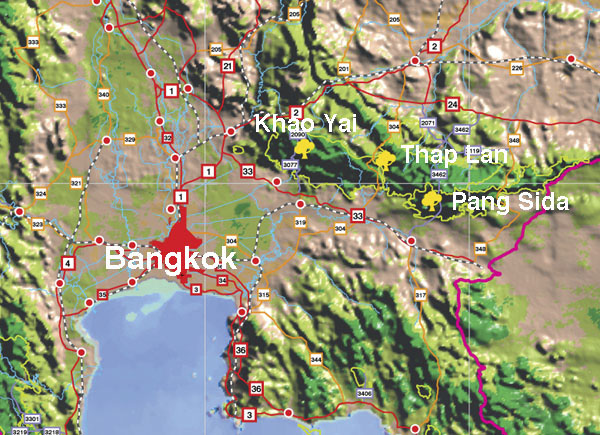

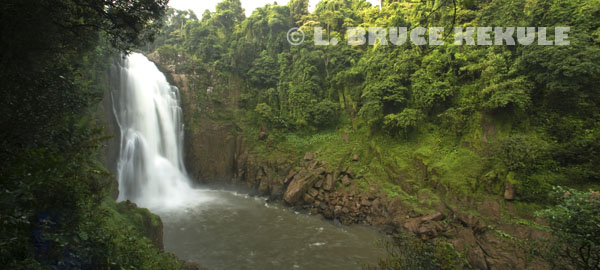



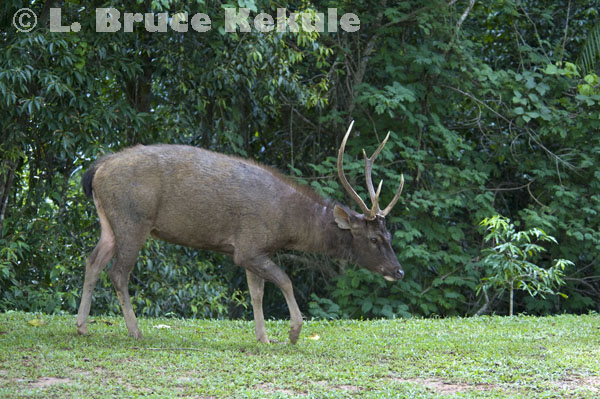
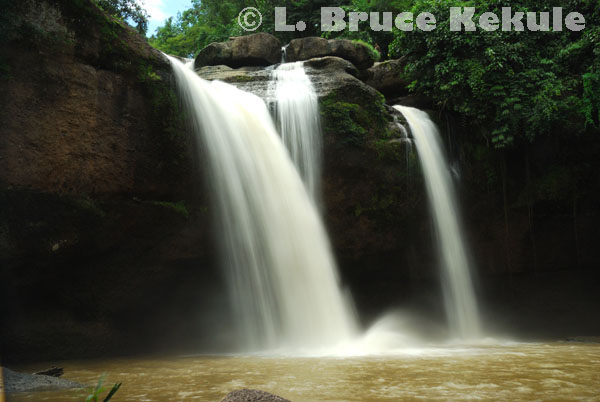
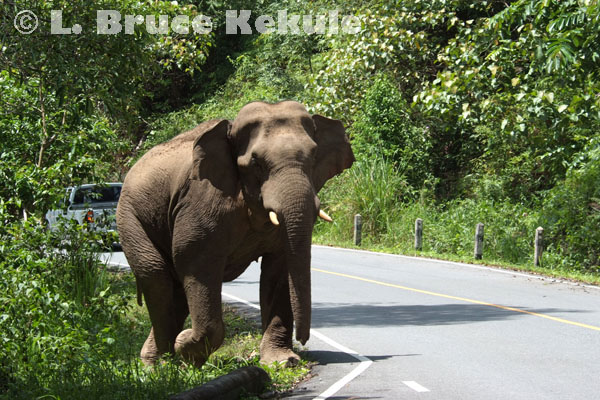



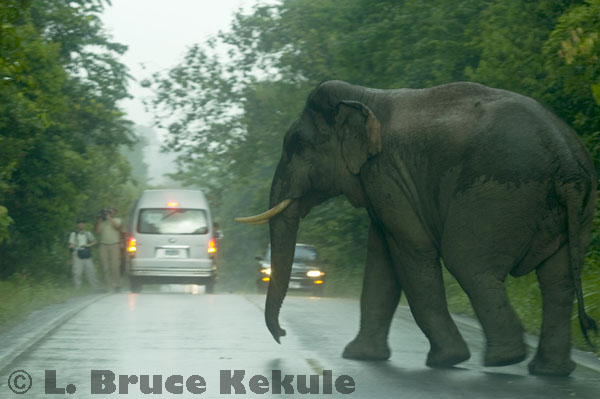


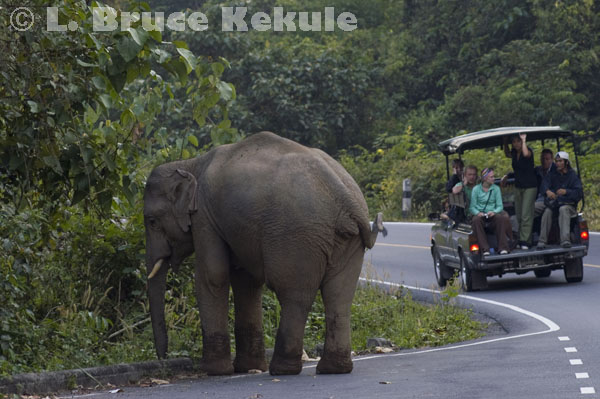

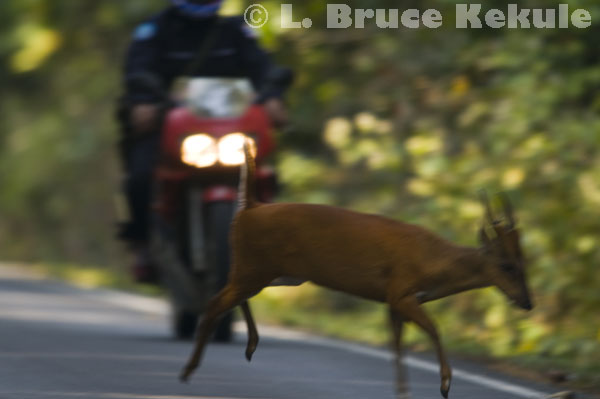


 Reply With Quote
Reply With Quote